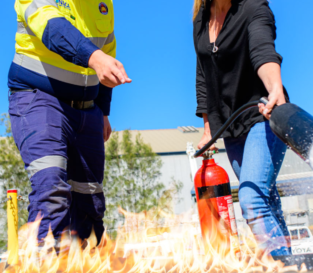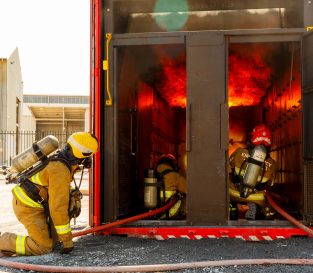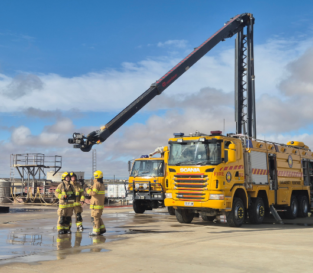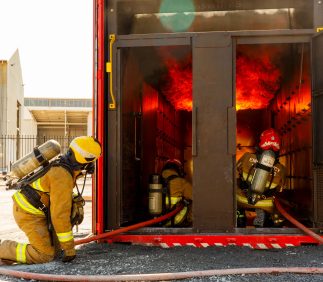 ALL NEWS
ALL NEWS
Emergencies can occur without warning in the workplace, putting employees, clients, and the business at risk. Whether it’s a fire, medical emergency, or another critical situation, having a well-prepared emergency response plan is crucial for ensuring safety and minimising damage. This guide will cover the steps Australian workplaces should take during emergencies, focusing on fire evacuations and medical emergencies, while adhering to Australian regulations.
Understanding Emergency Response Plans
An Emergency Response Plan (ERP) is a comprehensive set of procedures developed to manage workplace emergencies. Every Australian workplace should have a clearly defined ERP that complies with the Work Health and Safety Act 2011 (WHS Act) and the WHS Regulations 2017. These regulations require businesses to provide a safe working environment, including preparing for emergencies.
A proper ERP includes:
- Identification of potential emergencies (e.g., fire, gas leaks, medical emergencies, hazardous material incidents)
- Evacuation procedures
- Emergency contacts and communication protocols
- First aid and medical response plans
- Training and drills to ensure all staff know their roles
Fire Evacuations in Australian Workplaces
Fire emergencies pose a significant risk to lives and property. Workplaces must have a fire evacuation plan that complies with Australian Standards (AS 3745-2010: Planning for Emergencies in Facilities). The plan should outline evacuation routes, assembly points, and the responsibilities of emergency wardens.
Steps for Fire Evacuations:
1. Raise the alarm: At the first sign of fire, activate the workplace fire alarm. Ensure employees are familiar with the location of fire alarms and fire extinguishers.
2. Call emergency services: Dial 000 for fire emergencies. Clearly communicate the nature of the emergency, location, and any hazards.
3. Evacuate the premises: Follow the predetermined evacuation routes. Employees should leave calmly and quickly, using stairways instead of elevators. Evacuation plans must be displayed prominently around the workplace.
4. Head to assembly points: Move to the designated assembly area, which should be a safe distance from the building. This is where roll calls and headcounts should occur to ensure everyone is accounted for.
5. Follow the directions of fire wardens: Fire wardens play a critical role in managing the evacuation process, ensuring that all employees safely exit the building.
6. Do not re-enter the building: No one should re-enter the building until fire authorities have declared it safe to do so.
Fire Safety Training
Conducting fire safety training ensures employees know how to respond quickly and appropriately during a fire emergency. This includes training on how to use fire extinguishers, understanding different types of fires, and recognising when evacuation is necessary. Regular fire drills are also essential for maintaining preparedness.
Medical Emergencies in the Workplace
Medical emergencies can happen at any time and include incidents like heart attacks, severe injuries, or sudden illnesses. A quick response can save lives, so having trained first aid personnel and accessible first aid kits is essential. Australian workplaces must comply with the First Aid in the Workplace Code of Practice, which outlines the number of first aid officers and the contents of first aid kits required based on the size and nature of the business.
Steps for Medical Emergencies:
1. Call emergency services: Dial 000 for any serious medical emergency. Provide clear details of the situation, the location, and any known medical conditions of the affected individual.
2. Provide first aid: Until emergency services arrive, trained staff should administer first aid. This could include CPR for cardiac emergencies or basic wound care for injuries.
3. Ensure access for paramedics: Make sure that paramedics can easily access the injured person. Clear any obstacles from the building entrance or the emergency scene.
4. Keep records: Document the emergency response and any first aid administered. This is important for legal compliance and follow-up care.
Training and Preparedness
Workplace safety training is essential for reducing the impact of emergencies. Australian workplaces must conduct regular training to ensure that employees are familiar with the ERP, evacuation procedures, and first aid responses. Some essential training programs include:
- Fire Warden & Safety Training Courses: Fire wardens are responsible for managing evacuations and liaising with emergency services.
- First Aid Training Courses: At least one first aid officer should be present in every workplace. Training should be updated regularly to comply with current standards.
- Emergency Response Drills: Fire and evacuation drills should be held regularly to ensure all employees know how to respond during emergencies.
Complying with Australian Regulations
Workplaces in Australia must comply with WHS legislation, which mandates the creation of a safe working environment. This includes preparing for emergencies, maintaining safe working conditions, and ensuring employees are trained in emergency response protocols. Failure to comply can result in legal penalties, endanger employees, and damage a company’s reputation.
Fire & Safety Australia can help you!
Having a well-prepared emergency response plan is not only a regulatory requirement but a vital part of workplace safety. Whether responding to a fire or medical emergency, businesses must ensure their employees are trained, evacuation plans are clear, and first aid resources are readily available. With regular safety training and preparedness, Australian workplaces can significantly reduce the risks associated with emergencies, keeping their employees safe and their businesses compliant with the law.
In addition to offering fire and safety training for emergency response, Fire & Safety Australia provides specialised safety training courses tailored for different industries. These industries include Aviation, where the focus is on aviation safety protocols, Construction, ensuring teams meet industry standards and maintain a safe working environment, and Defence, where the training is designed to meet the rigorous demands of military forces across the army, navy, and airforce. The training also extends to Maritime, Mining, Oil & Gas, and Renewables, offering comprehensive safety programs to ensure preparedness across a range of hazardous environments. This industry-specific approach ensures that teams are equipped with the knowledge and skills to handle emergencies unique to their work environments.
For more information on how Fire and Safety Australia can help your workplace with safety training and emergency response, contact us today!
References:
Safe Work Australia – Emergency Plans
“Emergency Plans and Procedures”
Australian Standards (AS 3745-2010)
“Planning for Emergencies in Facilities”
Work Health and Safety (WHS) Act 2011
“Work Health and Safety Legislation”
Australian Government – WHS Act
First Aid in the Workplace Code of Practice
“Guidelines for First Aid in Australian Workplaces”
Safe Work Australia – First Aid Code of Practice














 ALL NEWS
ALL NEWS